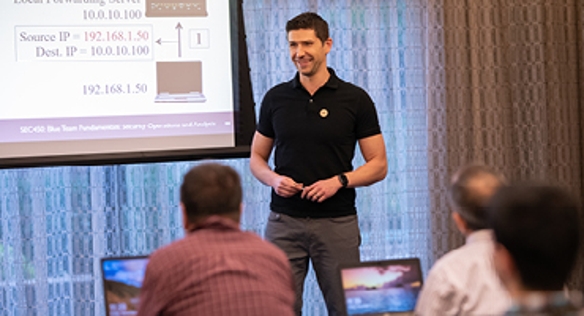Empowering Cyber Security Practitioners & Teams
Launched in 1989 as a cooperative for information security thought leadership, SANS Institute helps organizations mitigate cyber risk by empowering cyber security practitioners and teams with training, certifications, and degrees needed to safeguard organizations and advance careers.

Find Training
Find Training
Train with the best practitioners and mentors in the industry. Choose over 85+ cyber security courses, covering all specialties and experience levels.

Get Certified
Get Certified
Demonstrate your cyber security knowledge and capabilities with one of over 40 specialized GIAC cyber security certifications.

Scholarship Academies
Scholarship Academies
Help secure a new career in cyber security with our scholarship cyber academies designed for veterans, women, minority groups, and more.

Earn a Degree or Certificate
Earn a Degree or Certificate
Get started in cyber security or advance your InfoSec career with SANS.edu. Develop the skills you need and obtain the GIAC certifications employers want.
Why SANS Training?
Trusted Quality and Community
.png)
4.7 Stars (Over 66,000 Reviews in the Last Year)
40K
Companies Have Trained with SANS in Past 4 Years
99
of Fortune 100 Companies Use SANS
94K
GIAC Alumni in Our Expert Community
See What's New At SANS
Cyber Security Courses by Job Roles
Find your next course and certification. Over 80+ courses available across all experience levels with labs and exercises to practice your new skills immediately.
Security Awareness Training
Best-in-class Security Awareness solutions to elevate human risk management for your entire organization





.jpg)






